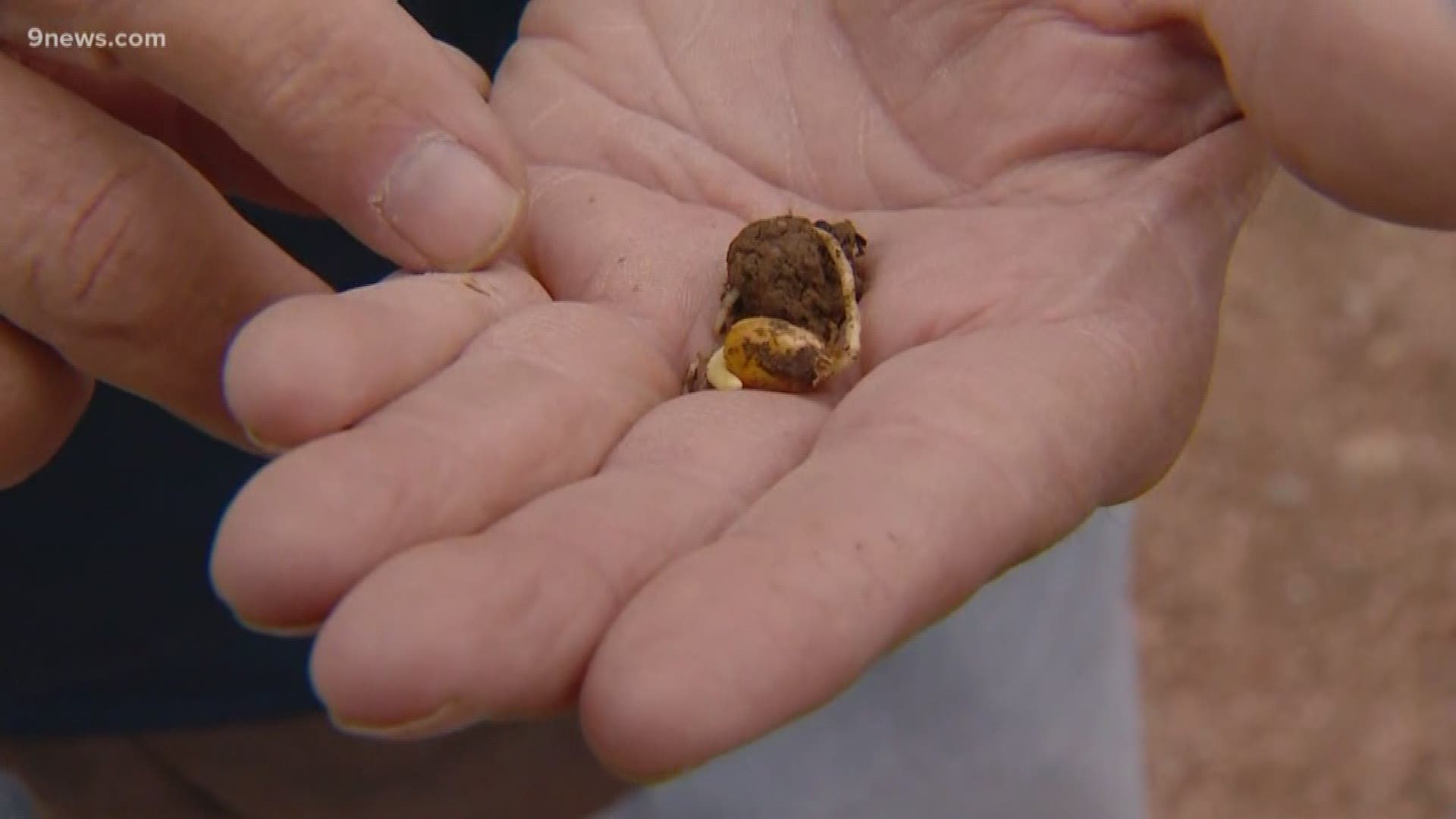COLORADO, USA — Hail in Colorado is nothing new, and it's something farmers across the state have to deal with every season.
"It's devastating to plants, and we make our living raising plants," said Ron Meyer, area extension agronomist for Colorado State University.
Meyer works out of Burlington, a small rural town about 168 miles east of Denver right next to the Kansas border.
Burlington farmers' two main crops are corn and wheat. Agriculture is a huge part of Colorado's economy, providing over $40 billion to the state and employing more than 170,000 people, according to the U.S. Department of Agriculture's 2018 statistics report.
Meyer said although this season has already seen more hail than at this time last year, his biggest concern is the lack of heat.
"We're a full 2.5 weeks behind normal as far as heat goes," Meyer said.
Plants grow based on how much heat they receive, he added. Corn, for example, is a tropical plant that grows better in hot weather.
"Our corn crop is way behind normal," Meyer said "We need the whole season."
Meyer said farmers in the state are 100% weather-dependent.
"There's nothing we can do," he said. "You hope the year averages itself out, that you pick up extra heat in the summer so corn grows."
If it doesn't, the corn crop would yield nothing, and farmers would suffer a huge financial loss, Meyer said.
"We're very optimistic out here. Sometimes July comes in [hotter] than normal," he said.
Meyer said the good news is that the wheat, which can grow normally in the cooler temperatures, will be fine.
"We harvest [wheat] in July. It can stay cool," he said.
Meyer said in Burlington, hail damage to crops this year has so far been minor, but has had an impact on other parts of the state.
"[Hail] breaks plants over. It's like a lawnmower going through a field. Plants don't recover from severe hail damage," he said.
Meyer said farmers do the following to mitigate potential hail damage to crops:
Buy crop insurance
"You can insure your crops for weather events — hail is one of them," Meyer said. "They pay a per-acre premium. If it doesn't hail, it's like car insurance, you don't use it."
Survey the damage and make a choice: Abandon or salvage.
"If it's light hail, then the crop can be salvaged," Meyer said. "Make the decision immediately if you'll abandon the crop
If abandoning a crop, assess whether it can be replanted.
"If the hail comes early, there's a chance to replant," Meyer said. "It's all about ... the length of the growing season. ... You have to replant before the first fall frost, which will happen in October."
Meyer added that while long-season crops like corn can't be replanted, there is a chance to regrow crops like feed, sunflowers and millet.
SUGGESTED VIDEOS | Science is cool

